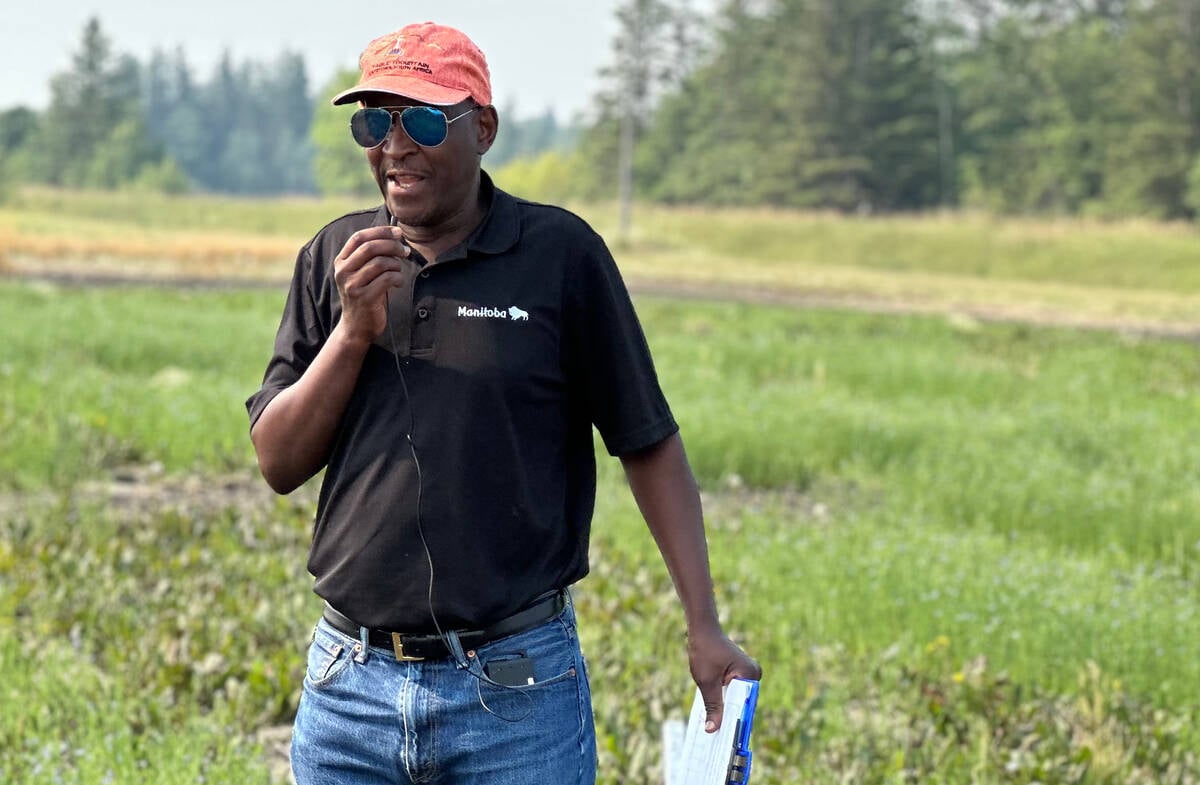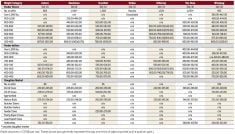Farm leaders are calling for special disaster assistance as flood losses in Manitoba appear ready to top the billion-dollar flood of 2011.
“It’s pretty hard to ignore the fact that there is a widespread problem that needs attention from all levels of government because rural municipalities and farmers on their own just can’t cope with it,” Chorney said in an interview July 4, just before Premier Greg Selinger declared a provincial state of emergency and called on the Canadian Forces to help protect homes and property along the Assiniboine River.
Read Also

How much nitrogen can farmers really cut?
Manitoba fertilizer trials look for nitrification inhibitor sweet spot, to lower greenhouse gas emissions and cost without hurting yield.
The Agriculture Producers of Saskatchewan (APAS) supports KAP’s request, said association president Norm Hall.
The National Farmers Union is calling for emergency farm disaster relief, regulated drainage in Saskatchewan and a reduction in greenhouse gases to mitigate climate change, which it believes played a role in the flooding.
A spokesman for federal Agriculture Minister Gerry Ritz said a provincial government has to request an AgriRecovery program before one can be implemented.
Chorney was to meet Kostyshyn this week to make the case, bolstered by the fact there was a $195-million assistance program following the 2011 flood. Of that, $150 million was cost shared 60-40 by the federal and Manitoba governments with the province picking up the remaining $45 million on its own.
Although both levels of government point to crop insurance, which includes excess moisture insurance for unseeded land, as well as potential support through AgriStability and AgriInvest, Chorney said changes introduced April 1, 2013 have substantially reduced support under AgriStability.
- More from the Manitoba Co-operator: Prairie ‘islanders’ struggling to keep spirits afloat
Gutted AgriStability
One KAP member who saw his income reduced due to flooding in 2011 would have received 50 per cent less money had the new AgriStability program been in place then, based on calculations made by a reputable accounting firm, Chorney said.
“It just shows all the things we predicted about AgriStability cuts are true,” he said. “Farmers are going to be… very surprised when they find out there’s not a lot there to help people.”
AgriRecovery, the so-called third line of defence, is meant to fill gaps left in existing farm programs, according to Chorney.
Selinger hasn’t ruled out triggering the program.
“The (Manitoba agriculture) minister will make a recommendation to us and we will follow up with him on that, but we expect there will be an ag recovery requirement as we go forward,” he told reporters July 4.
“There are currently enhanced risk management programs available to help producers deal with excess moisture,” an official with the Manitoba government said later in an email. “The province will continue to monitor the situation and take steps to address any gaps identified, which could include AgriRecovery. Producers who have questions about available programs and resources can contact their local GO office for assistance.”
Kostyshyn will continue to consult with organizations such as KAP and Manitoba Beef Producers, the official said.
The Manitoba Agricultural Services Corporation (MASC) was hoping to release an estimate of how many acres were too wet to seed this spring this week. Industry observers are estimating 800,000 to one million acres.
That would be much less than the nearly three million acres unseeded because of excessive moisture in 2011, which triggered $162 million in payouts under the Excess Moisture Insurance program.
In addition almost 502,000 acres of crops were destroyed by excessive rains.
A record $326.9 million was paid out under the federal-provincial crop insurance (AgriInsurance) program in 2011.
Different causes
The 2011 flood was mainly due to melting snow. This year’s flood is due to up to eight inches of rain falling across eastern Saskatchewan and western Manitoba at the end of June.
It’s too soon to know the full extent of the damage to crops, hayfields and pastures, officials with Manitoba Agriculture, Food and Rural Development said last week. Much depends on how long crops are under water, their stage of growth and the type of crop.
Longer term, KAP wants farmers in Manitoba and Saskatchewan and their provincial governments to work on mitigating future floods, Chorney said. That could include restoring wetlands or building regional reservoirs to store flood waters, he said.
KAP and APAS both support the creation of the Assiniboine Basin Commission to work on flood mitigation, although Hall said this year’s event has more to do with saturated land than drainage.
However, the NFU is less sanguine.
“Saskatchewan has been turning a blind eye to illegal ditching too long,” Melville, Sask., farmer and NFU Region 6 (Saskatchewan) co-ordinator Ed Sagan said in a news release. “Thousands of sloughs have been drained to create nice square fields that are easy to work. Now, with these big storms all that drainage adds up to worse floods downstream.”
















